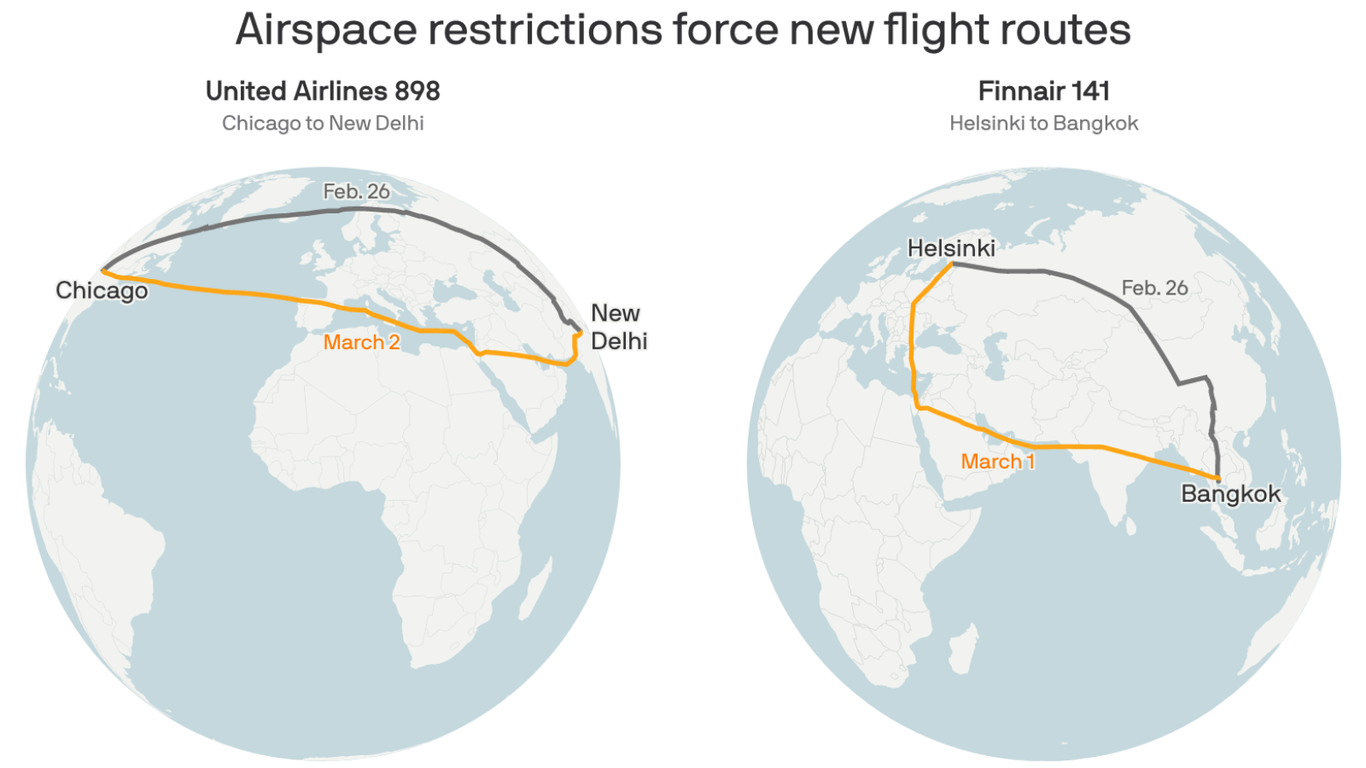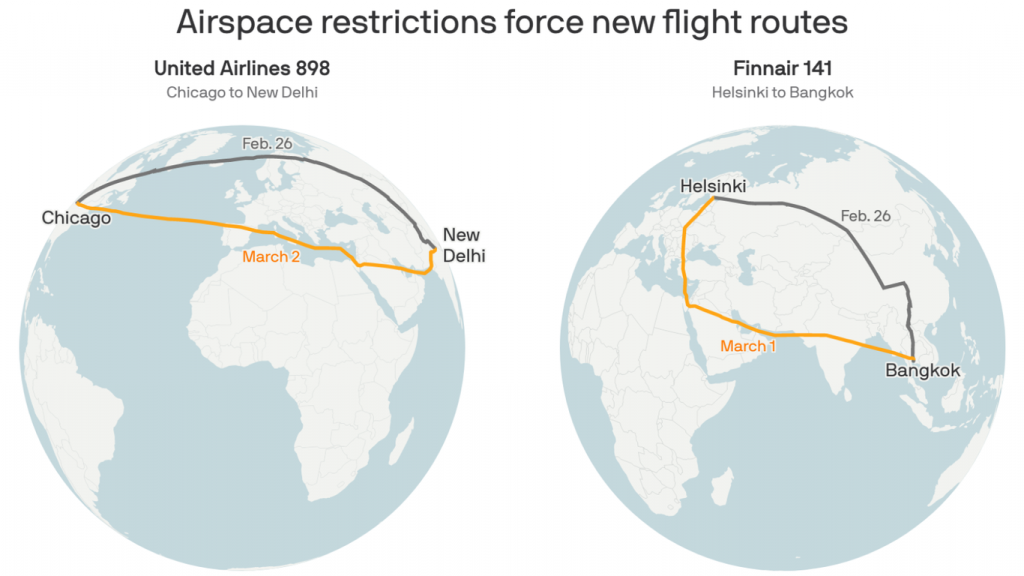


The Russian invasion of Ukraine is turning into a seismic event for the aviation industry just as it emerges from the COVID-19 downturn.
Why it matters: The closure of vast stretches of airspace from North America to Russia has airlines scrambling to determine what routes are still feasible and which flights can be rerouted. Flight times are increasing, along with their carbon footprints.
- In many cases, new U.S. airline routes to avoid Ukrainian and Russian airspace have been adding time to long-distance flights, resulting in greater emissions and higher costs for airlines amid increasing fuel prices.
The big picture: The prohibition of U.S. airlines from Russian airspace is blocking the most efficient flight paths between continents, including for flights between much of the U.S. and South Asia.
Zoom in: According to Umang Gupta, managing director at Alton Aviation Consultancy, the typical flight time between Europe and Asia is about 11.8 hours, and 13.5 hours flying the reverse leg.
- “In a best-case scenario, more than two hours of flight time will be added in each direction,” Gupta told Axios. The roundtrip fuel burn would increase by more than 20%, he said, and that’s for the most fuel-efficient wide body aircraft flying today, such as the Boeing 787-9 or Airbus A350-900.
- “At today’s oil prices of around $100/bbl, this will translate into nearly $25,000 of additional expenditure for the airline round trip,” Gupta said. To cover costs, airlines would need to increase fares by more than $120 for a round trip ticket.
- “Several US carriers also use Russian airspace to fly to Asia and will have to look for alternative longer routes, or perhaps even consider ‘tech stops’ to refuel, reduce passenger capacity or cargo on board,” he said.
Between the lines: For many people, air travel comprises the largest part of their annual carbon footprint. The war in Ukraine and resulting airspace disruptions means flights could have a greater footprint, simply due to the added time in the air and fuel burned.
- Gupta said that may be offset somewhat, though, since some airlines are suspending flights that would be forced to fly especially long routes. Passengers could choose an alternative such as stoping in Dubai on the way to Asia.
- According to FlightAware data, United Airlines has rerouted its flight from Chicago to Delhi to travel a far more southerly route, which has added at least an hour to the eastbound journey, and about two hours for the return. It previously tended to fly across Greenland, and would transit Russian airspace on its way back south.
- Routes between Europe and Asia are particularly affected, since they have to reroute to the south, sliding below Russian airspace.
- Air cargo routes are also shifting, which could exacerbate supply chain woes. Many cargo flights transited Russian airspace to fly between Europe, Asia and the U.S., for example.
Yes, but: Any added flight time is a small inconvenience compared to what the Russian airspace industry is about to go through, experts said.
- Aeroflot, the country’s most prominent airline, uses modern Boeing and Airbus aircraft, and both companies are pulling out of the country and ceasing to provide aircraft maintenance and parts.
- About half of the Russian airline fleet is leased, which means the planes’ owners will move to take possession of the aircraft, according to aviation industry analyst Richard Aboulafia of AeroDynamic Advisory.
- “Higher costs and more time is almost a luxury compared to the complete extinction of Russian aviation for as long as this lasts,” Aboulafia told Axios.
